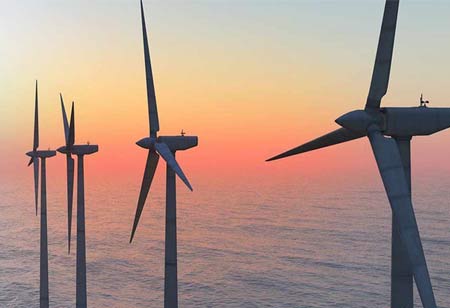Thank you for Subscribing to Energy Business Review Weekly Brief
Different Types Of Wind Energy
Wind turbines, like windmills, are mounted on a tower to capture the most energy. They can benefit from the faster and less turbulent Wind at 100 feet (30 meters) or above ground.

By
Energy Business Review | Monday, October 17, 2022
Stay ahead of the industry with exclusive feature stories on the top companies, expert insights and the latest news delivered straight to your inbox. Subscribe today.
When the earth's surface is heated unevenly by the sun, Wind will be caused.
FREMONT, CA: Wind turbines, like windmills, are mounted on a tower to capture the most energy. They can benefit from the faster and less turbulent Wind at 100 feet (30 meters) or above ground. Turbines catch the Wind's energy with their propeller-like blades. Two or three blades are commonly mounted on a shaft to form a rotor.
A blade acts much similar to an airplane wing. An area of low-pressure air forms on the blade's downwind side when the Wind blows. The low-pressure air pocket pulls the blade toward it, making the rotor turn. This is called lift. The force of the lift is much more powerful than the Wind's force against the blade's front side, called drag. The amalgamation of lift and drag causes the rotor to spin like a propeller, and the rotating shaft spins a generator to make electricity.
Land-Based Wind Energy
Wind turbines can be employed as stand-alone applications, connected to a utility power grid, or combined with a photovoltaic (solar cell) system. For utility-scale (megawatt-sized) sources of wind energy, many wind turbines are generally built close together to form a wind plant, also called a wind farm. Many electricity providers today employ wind plants to supply power to their customers.
Stand-alone wind turbines are generally used for water pumping or communications. Still, homeowners, farmers, and ranchers in windy areas can also use wind turbines to cut their electric bills.
Distributed Wind Energy
Small wind systems also have the potential as distributed energy resources. Distributed energy resources relate to a variety of small, modular power-generating technologies that can be combined to upgrade the operation of the electricity delivery system.
Offshore Wind Energy
Offshore wind energy is a comparatively new industry. Offshore Wind could be accessible in all coastal regions nationwide.






